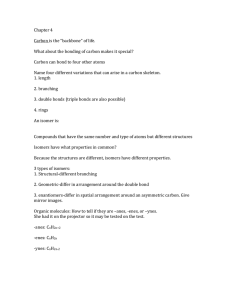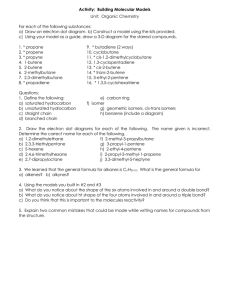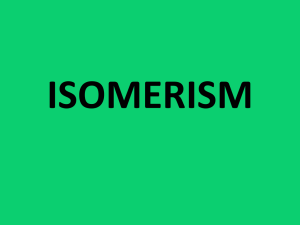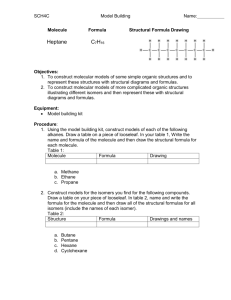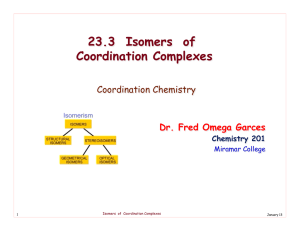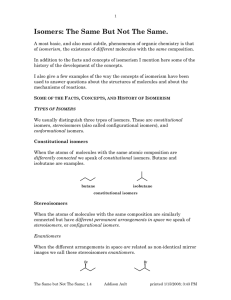2006a(2)/00b(9): What is an isomer? Briefly write an account of... isomers and significance to drugs in anaesthesia
advertisement
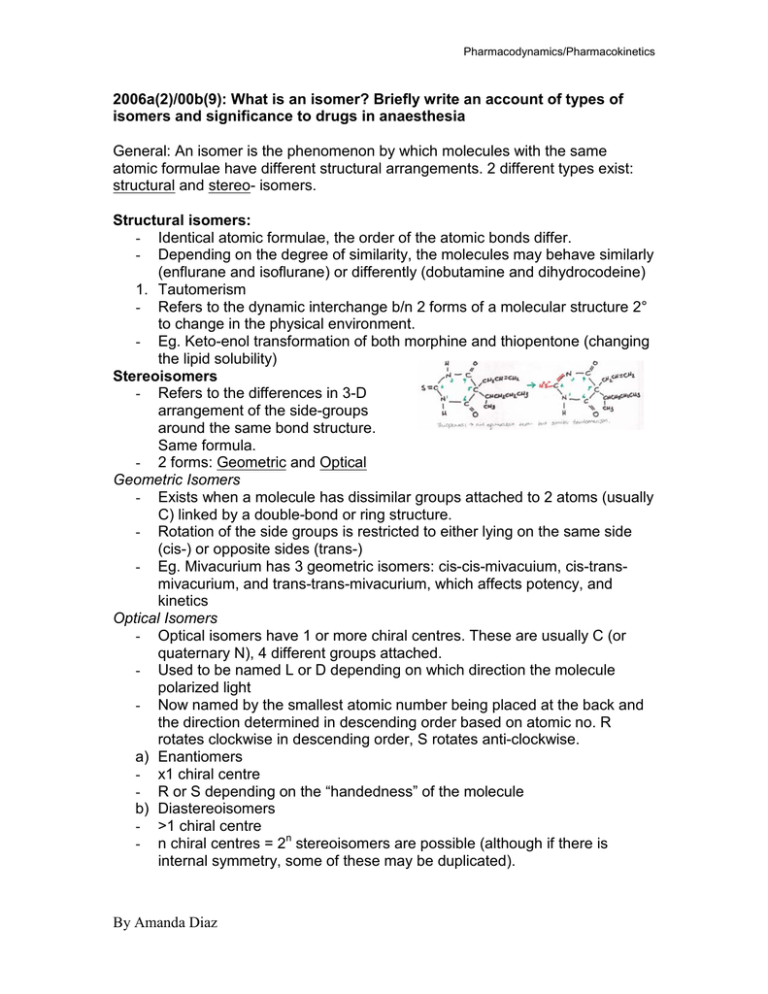
Pharmacodynamics/Pharmacokinetics 2006a(2)/00b(9): What is an isomer? Briefly write an account of types of isomers and significance to drugs in anaesthesia General: An isomer is the phenomenon by which molecules with the same atomic formulae have different structural arrangements. 2 different types exist: structural and stereo- isomers. Structural isomers: - Identical atomic formulae, the order of the atomic bonds differ. - Depending on the degree of similarity, the molecules may behave similarly (enflurane and isoflurane) or differently (dobutamine and dihydrocodeine) 1. Tautomerism - Refers to the dynamic interchange b/n 2 forms of a molecular structure 2° to change in the physical environment. - Eg. Keto-enol transformation of both morphine and thiopentone (changing the lipid solubility) Stereoisomers - Refers to the differences in 3-D arrangement of the side-groups around the same bond structure. Same formula. - 2 forms: Geometric and Optical Geometric Isomers - Exists when a molecule has dissimilar groups attached to 2 atoms (usually C) linked by a double-bond or ring structure. - Rotation of the side groups is restricted to either lying on the same side (cis-) or opposite sides (trans-) - Eg. Mivacurium has 3 geometric isomers: cis-cis-mivacuium, cis-transmivacurium, and trans-trans-mivacurium, which affects potency, and kinetics Optical Isomers - Optical isomers have 1 or more chiral centres. These are usually C (or quaternary N), 4 different groups attached. - Used to be named L or D depending on which direction the molecule polarized light - Now named by the smallest atomic number being placed at the back and the direction determined in descending order based on atomic no. R rotates clockwise in descending order, S rotates anti-clockwise. a) Enantiomers - x1 chiral centre - R or S depending on the “handedness” of the molecule b) Diastereoisomers - >1 chiral centre - n chiral centres = 2n stereoisomers are possible (although if there is internal symmetry, some of these may be duplicated). By Amanda Diaz Pharmacodynamics/Pharmacokinetics Eg. Atracurium has 4 chiral centres (2C, 2N) and is a symmetrical molecule, therefore instead of the expected 16 steorisomers, there is only 10. Atracurium v cisatracurium - Atracurium is 15% by weight cis-atracurium - Cis-atracurium is o More potent o Results in no histamine release o Degradation mainly 1° through Hofmann degradation (atracurium is 60:40 Esterase:Hofmann) - By Amanda Diaz



